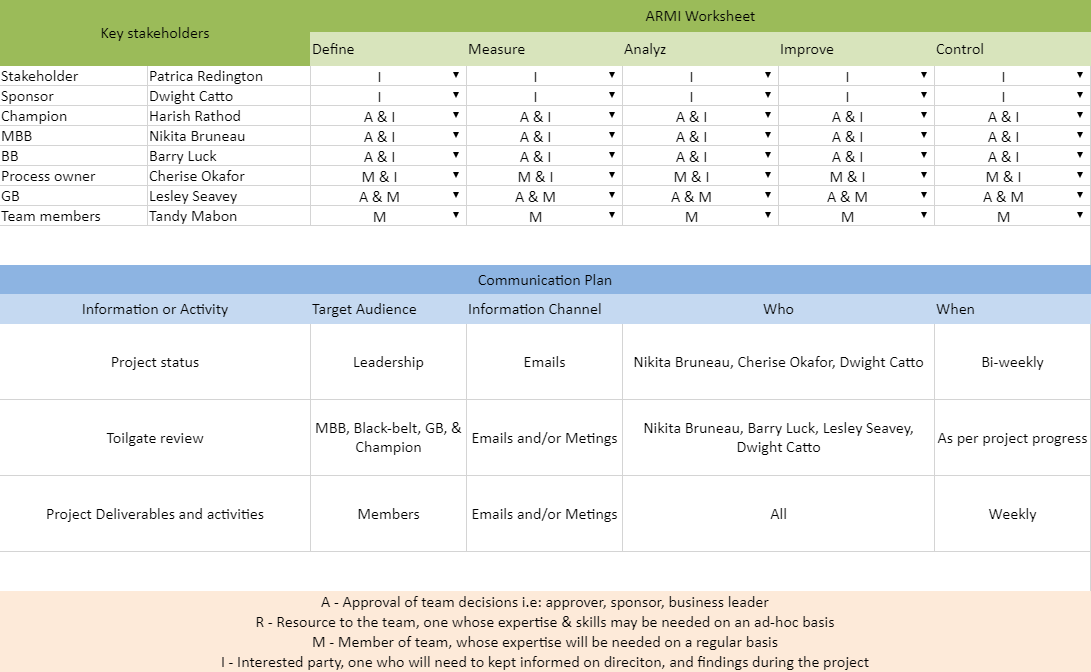ARMI is a project management tool that can be used to analyze the level of support of project stakeholders. ARMI is the acronym of the four levels of support: Approver, resource, member, and the interested party that can be assigned to the various stakeholders:

- Approver: an individual whose sign-off is required to move forward with the project
- Resource: expert whose skills are required for the project
- Member: those individuals making up the project team
- Interested party: people who need to be kept up-to-date on the project
The ARMI is typically used in the DMAIC Process to assess each person’s role in the project during various phases of the project. It helps in defining the role of each individual within the project team. It helps in clarifying any ambiguity related to the roles and responsibilities of these individuals. Let’s look at an example of ARMI:

ARMI vs RACI Matrix
ARMI is similar to the project management tool RACI (Responsible, Accountable, Consulted, Informed) for categorizing the level of participation of project team members. There are some differences, the focus on RACI is about the work, whereas the focus of ARMI is on the stakeholders across various stages of the project
RACI stands for Responsible, Accountable, Consulted, Informed. It breaks down the teamwork into tasks, and map out who is responsible, who is accountable, who should be consulted, and who must be kept informed for each of the tasks.
ARMI (Approver, Resource Person, Member, Interested Party) is more Six Sigma in origin. It serves as a tool to list and categorize stakeholders in a Six Sigma Improvement Project.
| RACI | ARMI |
|---|---|
| This will be used when we want to know who is responsible/accountable/decision-maker for work or activity. The focus is on the activity that needs to be completed and by whom | Here the focus is on which stakeholder is playing at what role at a given point of time (as we traverse through various stages in a project) |
| Normally this is a static chart or may not change much in terms of personnel assigned for each role | Every role prescribed here, the change will happen much more than RACI, as we traverse through the various stages of the project |
| This is prepared when usually there is a confusion of the activities or work being done by the team as who would be doing what or which activities | This may not necessarily happen or created in a confused state |
| There is a Consulted role here which does get involved predominantly in critical activities normally. But the personnel playing that role will not be part of the project team. | There is no equivalent role here which is similar to the ‘Consulted’ role in RACI. However, ‘Resource’ role is there as an expert role which can be there for a specific period but later can be part of the project team (‘Member’ role) |
Thus ARMI and RACI are both tools that help in developing the ‘Responsibility Matrix’, whereas they are better suited for the situations of application as listed in the table above.
How to Use ARMI Together with Communication Plan
